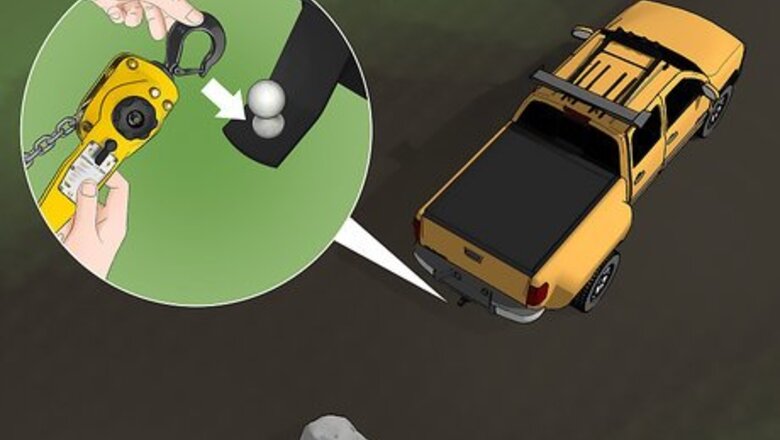
views
Using a Ratchet Hoist

Secure 1 end of the ratchet hoist to an immovable object. Ratchet hoists, also called “come alongs,” can be found at your local home improvement store and online. You could secure the hoist to a strong tree trunk or a trailer hitch. Loop 1 end of the hoist around the immovable object and secure the strap through the hook latch bolt to make sure it won’t come off the object.
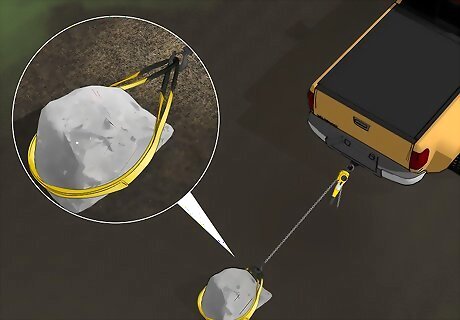
Wrap the straps securely around the rock. Generally, a ratchet hoist has 4 in (10 cm) wide nylon straps attached to it. Loop the straps around the rock, securing them with a tight knot to make sure that they won’t come loose under tension while you’re moving the rock.
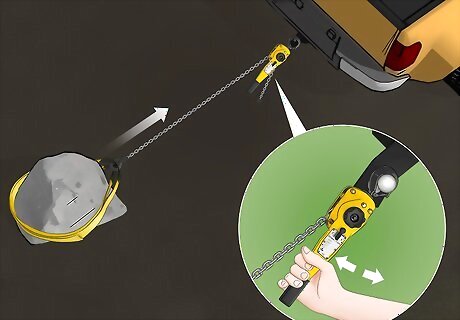
Crank the ratchet to move the rock. Once both ends of the hoist are secure, crank the ratchet by moving it back and forth. Continue cranking the ratchet until the rock has moved to the desired location. At that point, remove the straps from the immovable object and the rock.
Dragging Rocks
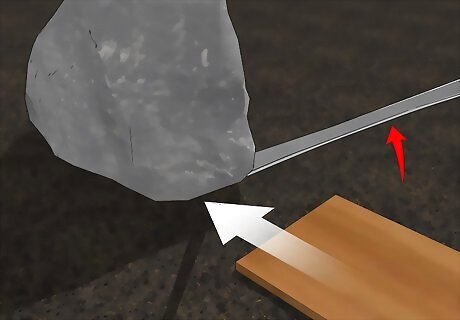
Pry the rock loose, if necessary. Wedge a pry bar underneath the rock and balance it on a wooden block to gain leverage. Pry the rock loose, and use a shovel to remove dirt and other debris out from under from the rock.

Move the rock onto a tire with a rope tied around it. Tie a rope around an old tire, looping the rope through the hole in the middle. Then, cover the tire with a large piece of fabric, like an old sheet. The fabric will prevent the rock from getting wedged in the tire. Roll or lift the rock onto the tire, using a pry bar or ratchet hoist if necessary.

Pull the rope attached to the tire to drag the rock. Put on thick gloves and grab onto the rope that is tied to the tire. Use the rope, drag the tire and the rock to the desired location. Then, roll or lift the rock off of the tire into the spot you want it. You can use a pry bar or ratchet hoist if needed.
Using a Plank and Rollers
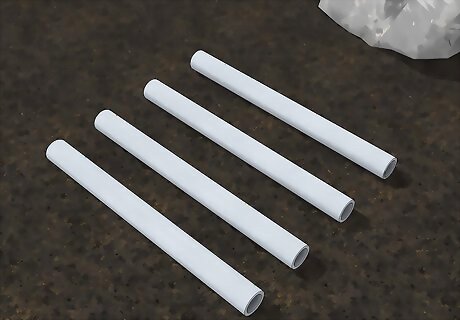
Place 4 iron pipes parallel to each other on the ground. Lay out 4 iron pipes on the ground. Make sure they are parallel to each other and evenly spaced. The length of the pipes and how far apart to space them depends on the size of the plank and rock you want to move.
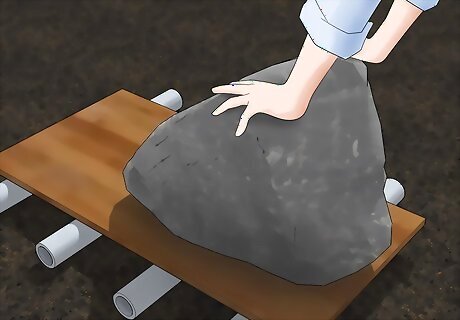
Put a plank on top of the pipes, then put the rock on the plank. An old sheet of plywood works well for a plank. Center it on top of the 4 pipes, then roll or lift the rock onto the plank. Use a pry bar or ratchet hoist to move the rock if necessary. Do your best to center the rock on the plank.
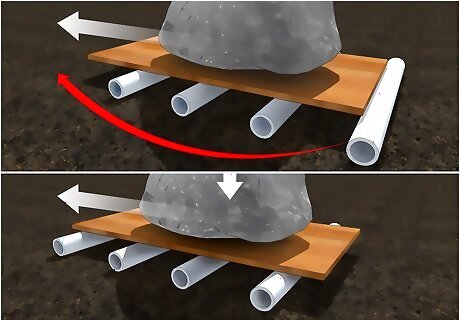
Roll the plank and rock, moving the pipes as necessary. Push the rock so that the plank rolls across the pipes. When the plank has moved enough that a pipe is visible behind it, move that pipe in front of the other pipes so the plank can roll across it. Continue moving the pipes and rolling the plank until you reach the desired location. Then, move the rock off the plank and pipes, using a pry bar or ratchet hoist if you need to.
Moving Rocks with a Skid Steer
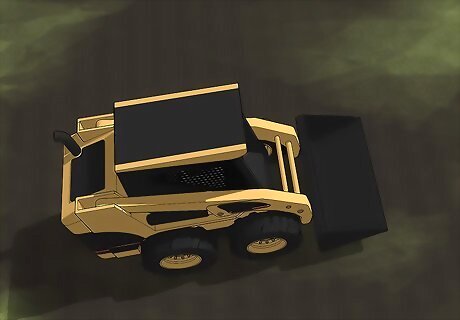
Arrange to have a skid steer and operator come to the location. You can find companies in a phone book or online that allow you to rent a skid steer. Make sure that the company you choose will provide an experienced operator if you don’t know how to use a skid steer yourself. Explain that you need to move large rocks and make an appointment for the skid steer and operator to meet you where the rocks are located. A skid steer is a multipurpose vehicle, like a Bobcat, that can be used to move heavy objects. It typically costs around $175 to rent a skid steer for 4 hours, plus the labor rate of around $50 per hour for the operator.
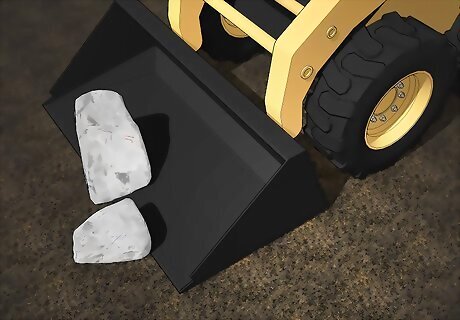
Load the rocks in the skid steer. Generally, a skid steer with a bucket or forks will be used for moving large rocks. Point out the rocks you need moved to the operator so they can load them into the bucket or onto the forks. The operator will place the forks or bucket underneath the rocks and lift them up.
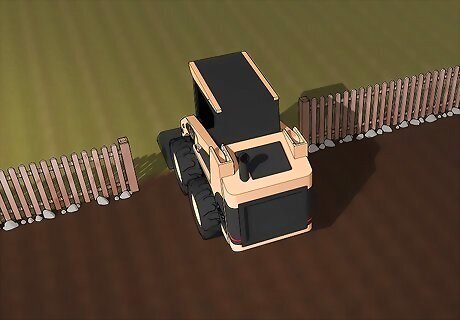
Drive the skid steer to the desired location and unload it. Make sure the path is clear for the skid steer to move from 1 location to the next. Once you’ve got the skid steer in the right location, ask the operator to unload the rocks. They will lower the forks or bucket and deposit the rocks on the ground.




















Comments
0 comment